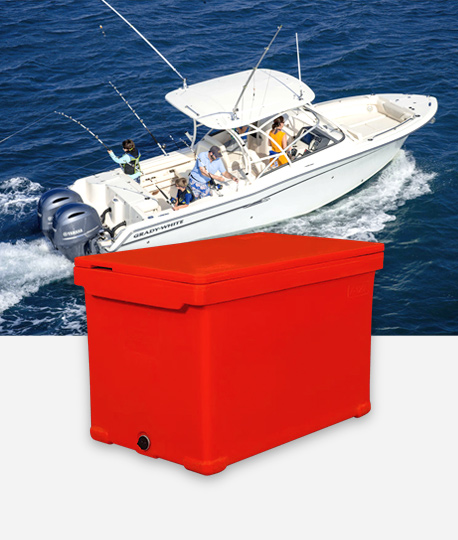The live fish transportation industry plays a vital role in ensuring the global supply of seafood and ornamental fish. Transporting live fish from farms to markets, aquariums, and fish enthusiasts requires careful planning and specialized containers to maintain water quality and fish health throughout the journey. Live fish transportation containers have become essential tools in the aquaculture and ornamental fish trade, revolutionizing the way aquatic organisms are moved.
1. The Need for Specialized Containers:Unlike transporting other types of goods, moving live fish poses unique challenges. Fish are highly sensitive to changes in water quality, temperature, and stress levels. To ensure the well-being and survival of fish during transportation, specialized containers are required. These containers are designed to maintain water quality and stability, providing a safe and stress-free environment for the fish.
2. Water Circulation and Filtration Systems:Live fish transportation containers are equipped with advanced water circulation and filtration systems. These systems continuously circulate the water within the container, promoting oxygenation and eliminating waste products such as ammonia and nitrite. Maintaining optimal water quality helps reduce stress and prevents fish from succumbing to poor water conditions during transit.
3. Temperature Control and Insulation:Temperature control is crucial for live fish transportation, especially during long journeys or when crossing varying climatic conditions. Containers come with insulation materials that help regulate the water temperature, ensuring it remains within the acceptable range for the specific fish species being transported. Maintaining a stable temperature prevents thermal stress and temperature shock.
4. Minimizing Mechanical Stress:Transporting live fish often involves road or air travel, which subjects the fish to mechanical stress caused by vibrations and movement. Live fish transportation containers are designed to minimize mechanical stress by providing secure compartments and cushioning materials. These features help prevent fish from being jostled during transit, reducing the risk of injuries or fatalities.
5.Sustainable Practices:Sustainable and eco-friendly practices are increasingly important in the live fish transportation industry. Many containers are designed with reusable and recyclable materials to minimize waste. Additionally, the efficient water circulation and filtration systems reduce water consumption, contributing to resource conservation.
Live fish transportation containers have revolutionized the way live fish are moved, ensuring the safe and efficient transfer of aquatic organisms. By providing advanced water circulation, filtration, temperature control, and minimizing mechanical stress, these containers protect the health and well-being of live fish during transit. Compliance with regulations and adoption of sustainable practices further enhance the industry's commitment to animal welfare and environmental responsibility.
AF-1700L Large Tuna Fish Long Distance Live Fish Transportation and Storage Containers
AF-1700L Large Tuna Fish Long Distance Live Fish Transportation and Storage Containers
The Wanma AF-1700L PUR insulated on board handling plastic container offers a unique solution for the storage of live lobster and Tuna, handling and transportation of live lobster when use in conjunction with the 140L crates – Wanma AF-1700L insulated lobster container holds 8*140L crates for lobster. This provides an innovative solution that minimizes handing and promotes higher value ,customer satisfaction and better matketability for your lobster.


 English
English Español
Español عربى
عربى 中文简体
中文简体
-4.png)
-4.png)
-2.png)

-2.png)
-2.png)




